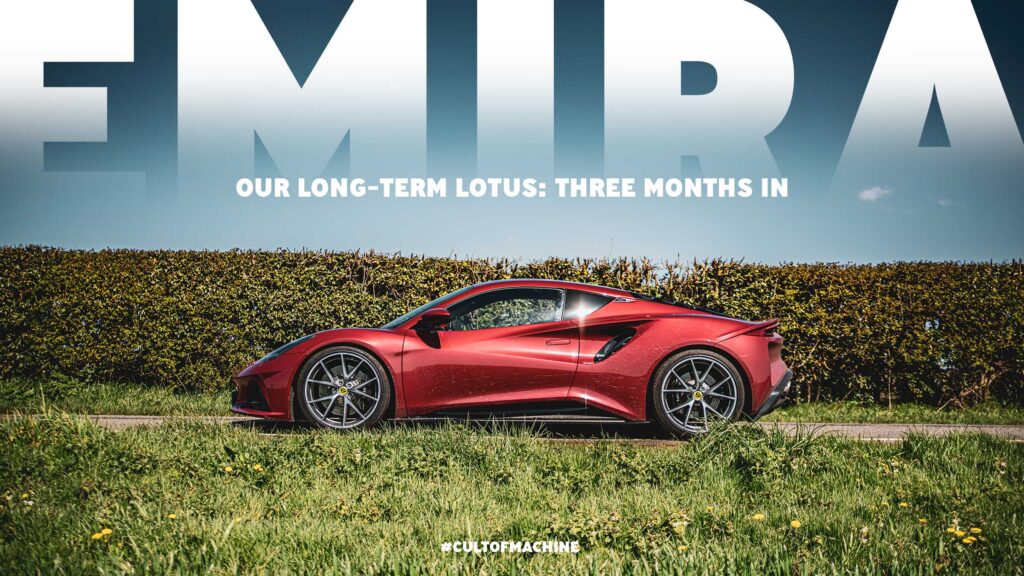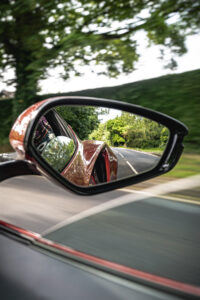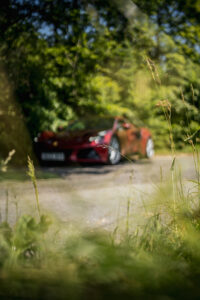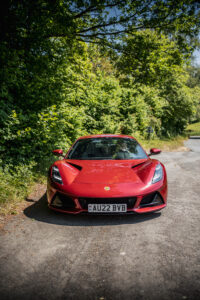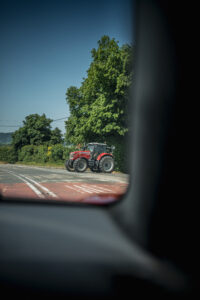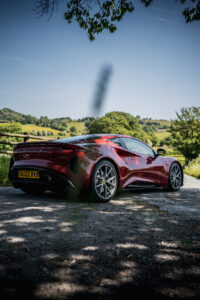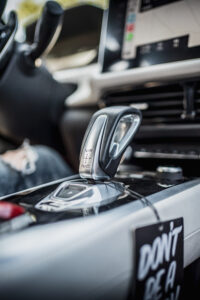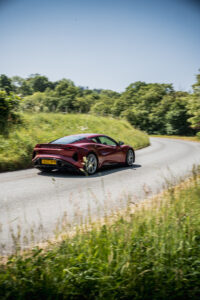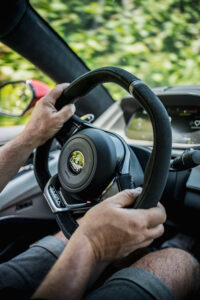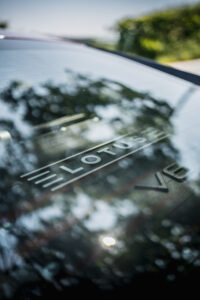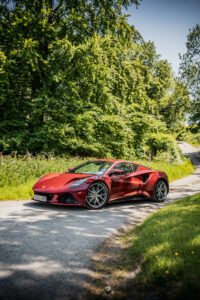We’re three months into our time with our long-term, pre-production Lotus Emira. Here’s what we think so far, and what we’d like to do next.
We’re three months into our time with the Lotus Emira; the Norfolk firm’s internal combustion hail Mary. Sitting in the tiniest window between keeping a beguiling but outdated platform on life support while scrabbling around the back of the sofa for spare change, and a cash-boosted electric future that looks promising albeit very different from the Lotus brand we know. This will be the first and last car of its kind, so Lotus must get it right. Have they?
Well, as we suspected upon reveal and had inklings of during a run to the Alps in a different Emira last year, this is not like Lotuses (Loti?) of old. Is it as magically agile and direct as an Elise, Evora, or Exige? No. Those were wonderful drivers’ cars, but occasionally at the expense of everything else. The Emira blends a far greater level of usability and refinement into the mix that makes it a genuinely enticing daily prospect. In spirit, the last Lotus to arguably come close was the late V8-powered Esprit. It may aggravate the most hardcore Lotisti, who’ll doubtless be taking to the forums to trot out that Colin Chapman quote, but we suspect that even they’d see the appeal after a long run in the Emira.
This is the first Lotus in a long time that’s a genuinely pleasant place to sit in and cover long distances. The materials and fit and finish are a vast improvement, with lots of switchgear borrowed from various other brands under the Geely umbrella. It’s a blessing to be able to hook up CarPlay so easily to the well-integrated central screen, though Lotus have, for the sake of everyone’s sanity, retained some physical buttons and dials below it for core interior functions.
Forward visibility is on par with McLarens thanks to the big windscreen and stubby front end, and overall, the cabin is an airy, spacious place to sit. It feels odd to discuss things like this in a report on a Lotus, but there’s no getting around the facts that they needed to broaden this car’s appeal for it to be a success. That flat-bottomed and topped steering wheel is too thick, though, and the standard seats could offer more support for the lower back and thighs.
This is still a Lotus, so its ability to go down a good stretch of road is still vital. Yes, it lacks that last bit of finesse offered by its predecessors, but this is still an excellent-handling car. Lotus’s in-house chassis wizard, Gavan Kershaw, has made sure of that. We’re yet to get it on track, but we suspect the Emira’s chassis attributes make it first and foremost a road car.
There’s a disclaimer here in that Lotus very kindly lowered our car, a very early pre-production model, by 15mm, dropping it back to the height of 2021’s original show car. Our freedom to modify it has been taken further still by Ben Broke-Smith of String Theory Garage, and the Emira now sits as low as we can reasonably take it, those 20-inch alloys deliciously filling out the arches. Nevertheless, it rides down broken, lumpy British roads with aplomb, and there’s a touch of natural pitch and roll in the suspension that, while potentially the chassis’ undoing when pushed to ten tenths on track, makes it a wonderful companion along a flowing B-road.
The engine is a mixed bag. On the one hand, it’s full of character. Plenty has been written about this Toyota-sourced 3.5-litre supercharged V6 since it debuted in a Lotus (initially in naturally-aspirated form) in the Evora in 2009. The fact is, it’s wonderfully characterful, and comfortably belies its humble origins. It growls deeply behind your head, and makes a particularly naughty noise on downshifts. It’s a hugely appealing prospect, made even more enjoyable by the mechanical fascination of the visible throttle actuator working away in the rear-view mirror.
This is still a big old lump of an engine, though. There’s a widespread suspicion that the lighter 2.0-litre Emira, equipped with a Mercedes-AMG-sourced turbocharged four-cylinder and currently slated to arrive later in 2023, will be a sweeter-handling car when pushed hard. It’s also doubtful that that engine will provide anything like the rich, evocative soundtrack of the V6, though. We’ll reserve judgement until we’ve had a go in the four-cylinder car, but future Emira buyers are likely to face a difficult choice between ultimate handling finesse and a more tuneful, characterful engine.
Quite possibly the biggest issue with this Emira in particular is the automatic gearbox. Yes, like all modern performance autos, you can work your way up and down the box with the paddles or use the gear selector as a mock sequential ’box, or just leave the car to its own devices. However, it fundamentally lacks the urgency and refinement of the best modern autoboxes (or a dual-clutch transmission, as will be fitted to the four-cylinder car). Thankfully, Lotus still know their audience, and still offer a proper manual with the V6. Our biggest piece of advice if you’re shopping for one: get three pedals.
Largely, the Emira has pleased us. We predicted going into our long-term loan that it would be a day-to-day prospect, closer in spirit to something like a Porsche Cayman than an Elise or Exige. Arguably, it’s sad that Lotus has moved away from its former heartland, but it’s a business, and needs to make money, and there’s increasingly little of that in barebones sports cars. The Emira feels like a solid compromise between the wants of the Lotus faithful and the needs of Lotus as a company, and it can still very much hold its own as a driver’s car while also working as a car for driving every day.
What’s next? Well, it’s probably about time we find out how the Emira handles some track driving, and we’d like to take it on a proper grand tour, too. We also took it on a trip to Wheel Pros Europe to try on some new shoes in the form of a set of Rotiform TUF-Rs. They’re a great-looking wheel, although the C&M office is split on whether the black examples we tried suited the deep red Lotus. A bigger hurdle was that the car is set up for forged wheels, and didn’t particularly enjoy wearing the cast Rotiforms, so we’re working on ways around that. Wheels are just the beginning, though – since this is a preproduction car destined for the crusher, we’ve got a whole lot more freedom than we would with most long-termers. What would you like to see happen to it?
